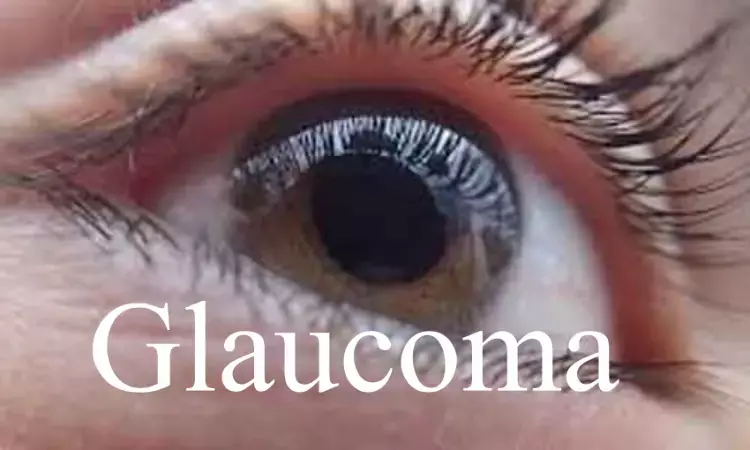- Home
- Medical news & Guidelines
- Anesthesiology
- Cardiology and CTVS
- Critical Care
- Dentistry
- Dermatology
- Diabetes and Endocrinology
- ENT
- Gastroenterology
- Medicine
- Nephrology
- Neurology
- Obstretics-Gynaecology
- Oncology
- Ophthalmology
- Orthopaedics
- Pediatrics-Neonatology
- Psychiatry
- Pulmonology
- Radiology
- Surgery
- Urology
- Laboratory Medicine
- Diet
- Nursing
- Paramedical
- Physiotherapy
- Health news
- Fact Check
- Bone Health Fact Check
- Brain Health Fact Check
- Cancer Related Fact Check
- Child Care Fact Check
- Dental and oral health fact check
- Diabetes and metabolic health fact check
- Diet and Nutrition Fact Check
- Eye and ENT Care Fact Check
- Fitness fact check
- Gut health fact check
- Heart health fact check
- Kidney health fact check
- Medical education fact check
- Men's health fact check
- Respiratory fact check
- Skin and hair care fact check
- Vaccine and Immunization fact check
- Women's health fact check
- AYUSH
- State News
- Andaman and Nicobar Islands
- Andhra Pradesh
- Arunachal Pradesh
- Assam
- Bihar
- Chandigarh
- Chattisgarh
- Dadra and Nagar Haveli
- Daman and Diu
- Delhi
- Goa
- Gujarat
- Haryana
- Himachal Pradesh
- Jammu & Kashmir
- Jharkhand
- Karnataka
- Kerala
- Ladakh
- Lakshadweep
- Madhya Pradesh
- Maharashtra
- Manipur
- Meghalaya
- Mizoram
- Nagaland
- Odisha
- Puducherry
- Punjab
- Rajasthan
- Sikkim
- Tamil Nadu
- Telangana
- Tripura
- Uttar Pradesh
- Uttrakhand
- West Bengal
- Medical Education
- Industry
Diabetes may Influence Microvascular Density in a Glaucoma Patient: AAO

American Academy of Ophthalmology (AAO) in their recent Virtual Meeting held this year presented data that highlighted that presence of diabetes mellitus may be linked to the variation in microvascular density of patients with primary open-angle glaucoma (POAG).
Primary open-angle glaucoma (POAG) is the most common type of glaucoma which is a significant cause of irreversible blindness worldwide. Older age, a family history of POAG, myopia, central corneal thickness, and ocular hypertension, are relatively consistent risk factors for POAG.
On the other hand, Diabetes mellitus (DM) is a serious and increasingly prevalent health problem worldwide due to lifestyle changes and an aging population. Its prevalence among all age groups worldwide was estimated to be 2.8% in 2000 and 4.4% in 2030. Some studies also found that DM is another possible risk factor for POAG. However, the relationship between DM and POAG is controversial.
Hence, a cross-sectional study was initiated by a team of US-based investigators to find out if the presence of diabetes mellitus pathology could associate with POAG density within superior and nasal quadrants.
The investigators studied a total of 44 eyes from many patients to basically evaluate the quantitative characteristics in link with radial peripapillary capillary (RPC) vascular plexus in patients affected with glaucoma with or without diabetes where diabetes was defined as HbA1c levels greater than 6.5%.
We included optical coherence tomography angiography (OCT-A), correlating observed associated changes with retinal nerve fiber layer (RNFL) thinning as seen on tomography, describes John Yu Cheng, BA, the lead author of the study.
Of the total eyes evaluated, 26 of them had primary open-angle glaucoma only while 18 were and POAG eyes with diabetes. All were then scanned using OCT-A and OCT RNFL.
The following results were observed-
- Patient`s eyes with diabetes and POAG showed a decreased mean microvascular density versus those with POAG alone.
- An assessment of RPC in 4 quadrants also showed patients with diabetes and POAG have reduced mean density versus POAG alone patients in and superior quadrants.
- A sub-analysis of RNFL on OCT in 4 quadrants also showed a difference in the thickness of RNFL between both patient groups.
- A moderate correlation in RNFL loss among patients with both diabetes and POAG having a decline in microvascular density was also noted.
Therefore, the authors concluded that "our results indicate diabetes pathology may act on the microvasculature density of primary open-angle glaucoma patients in a synergistic manner within superior and nasal quadrants"
Dr. Nandita Mohan is a practicing pediatric dentist with more than 5 years of clinical work experience. Along with this, she is equally interested in keeping herself up to date about the latest developments in the field of medicine and dentistry which is the driving force for her to be in association with Medical Dialogues. She also has her name attached with many publications; both national and international. She has pursued her BDS from Rajiv Gandhi University of Health Sciences, Bangalore and later went to enter her dream specialty (MDS) in the Department of Pedodontics and Preventive Dentistry from Pt. B.D. Sharma University of Health Sciences. Through all the years of experience, her core interest in learning something new has never stopped. She can be contacted at editorial@medicaldialogues.in. Contact no. 011-43720751
Dr Kamal Kant Kohli-MBBS, DTCD- a chest specialist with more than 30 years of practice and a flair for writing clinical articles, Dr Kamal Kant Kohli joined Medical Dialogues as a Chief Editor of Medical News. Besides writing articles, as an editor, he proofreads and verifies all the medical content published on Medical Dialogues including those coming from journals, studies,medical conferences,guidelines etc. Email: drkohli@medicaldialogues.in. Contact no. 011-43720751


